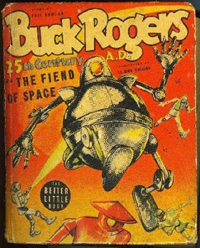

Comics tell a story with a combination of words and pictures, and work in a very similar way to animation. Both are artificially created (often hand-drawn), simplified representations of reality, and both attract audiences who are able to deal with those representations — although they may be looked down on as "less literate" than other media forms. For children, comics and animation offer a brightly-coloured, simpler version of the world they live in, but adults engage with them quite differently. Adult comics and animation occupy an important space within the huge genre known as 'Fantasy' - and fantasies can sometimes be considered dangerous. In their century or so of existence, they have often been cited as 'a corrupting influence on the young' (most famously by Dr. Frederic Wertham in his book, Seduction of the Innocent) and there have been many efforts to control and censor what appears on their pages.

As with other new, popular forms of entertainment, comics caused controversy. After the Hays Code came into force in 1931 (censoring movies in the USA), violent, pulpy stories with anti-heroes at their core migrated from cinema to comic book form where there was, at the time, no censorship. These comicbooks tapped into the adult market, with stories about sex and crime, that had a particular appeal, when the war came, for GIs overseas.
Although these stories might seem tame to the modern teenager, used to a diet of violent, sexual movies, TV and videogames, they were deemed a huge problem and psychiatrist Dr. Frederic Wertham suggested that they might be a contributing cause to juvenile delinquency.
Many comics are harmless, dealing with everyday characters and situations, such as the long-running Dilbert, or Peanuts. You can find a variety of the better known ones here. These contain many humorous representations of types and individuals, their main purpose is to make their audience laugh and they are syndicated to newspapers and magazines around the world.
There is a whole genre of comics dedicated to chronicling the adventures of superheroes. You will find the homes of many of these fantastic figures at DC Comics and Marvel. Both these comic houses are at the centre of huge merchandising and entertainment industries, producing spin-off movies and clothing as well as the comics themselves. Superheroes can be male as well as female, as you will discover here.
Disney also have their own specific comics devoted to their most popular characters. Find out about them here. You can also read through the main contemporary discussion topics relating to comics here.
Choose one particular representation of a female (from the examples online or the one you have brought with you), and list the advantages and disadvantages of her appearing as a comic/animated character as opposed to a real life one. Think about how an audience might relate to this character. Your answer should be in table form.